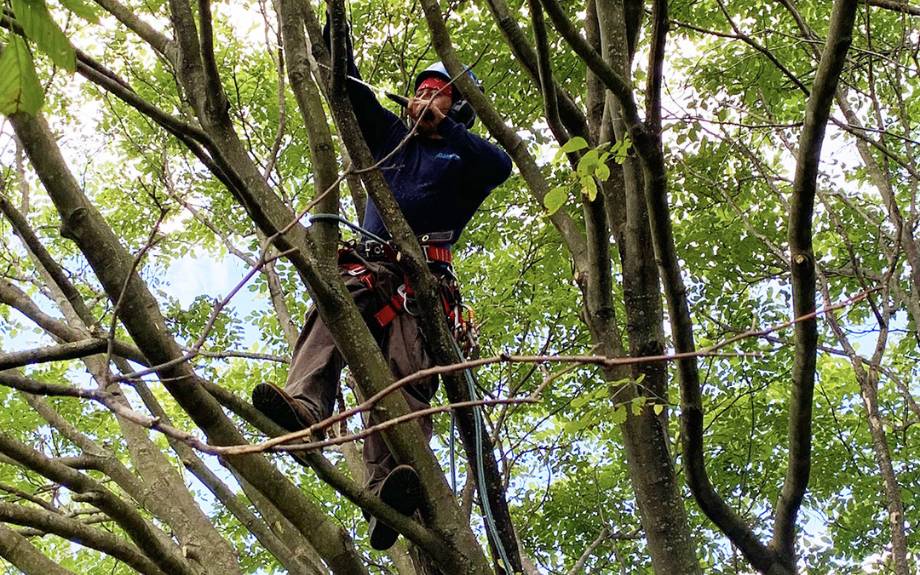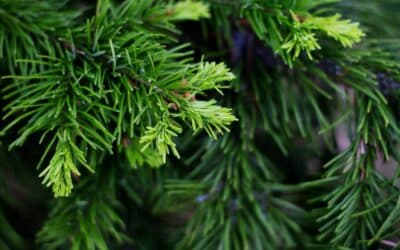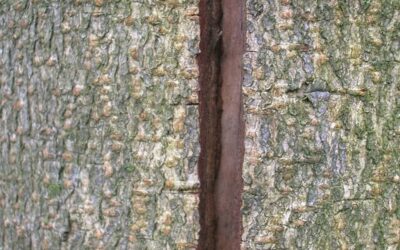Blog Topics
Proper pruning and trimming keep your trees structurally sound, healthy, and beautiful. Improper pruning, however, can lead to a host of problems, including pests, diseases, weakened structure, and even the death of your trees.
To ensure your trees stay healthy, it’s important that you can tell a good pruning technique from a bad one. To help you know the difference, here are five bad pruning examples that you should avoid at all costs.
- Over Pruning
- Pruning at the Wrong Time of Year
- Making Bad Cuts
- Pruning Large Branches
- Using Bad Pruning Techniques
Avoiding These Bad Pruning Examples
If you want to avoid mistakes in pruning and trimming your trees and shrubs, it’s important to distinguish between these two practices.
While many people use the terms “pruning” and “trimming” interchangeably, there is a distinction between them.
Pruning
Pruning is done with a tree or shrub’s overall health and growth strategy in mind. Pruning is typically done to achieve specific goals, including:
- Removal of dead or diseased wood
- Removal of old growth to make room for new seasonal growth
- Removing rubbing branches that can create wounds
- Thinning a crown of overgrown branches and limbs that are making the tree unstable
- Raising a canopy to increase visibility
- Improving overall structure
Whatever the pruning goal, the result should be a healthier and more aesthetically pleasing tree.
Trimming
Trimming trees and shrubs is typically employed when you need to control their shape or size independent of structural or health improvements. Examples include:
- Shaping and reducing the size of decorative shrubs
- Removing tree branches or reducing a crown when they are encroaching on power lines or potentially damaging structures (If you want more information specifically on power line trimming, the city of Fairfax has some helpful information)
Generally speaking, trimming focuses on the practical need to remove branches and change the size of a tree or shrub.
Fortunately, regardless of the terminology, professional tree services know what kind of cuts your tree needs to thrive, and they will employ the best strategies to achieve that goal.
1. Over-Pruning
Over-pruning is simply removing too much of a tree’s growth. When too much of a tree’s foliage is removed, it loses the ability to perform photosynthesis effectively.
Since photosynthesis is how all plants feed themselves, a drastic reduction in foliage can starve the tree. This energy reduction also leaves the tree unable to heal from wounds effectively, resist the effects of pest infestations, and fight off diseases.
In addition to potentially misshaping the tree permanently, excessive removal of branches creates wounds that leave the tree open to pest infestations and disease.
2. Pruning at the Wrong Time of Year
Pruning at the wrong time of year interferes with a tree or shrub’s natural life processes. Depending on their type, trees and shrubs have different requirements regarding ideal pruning time.

Trees
Ideally, trees should be pruned during the winter when they are dormant, but they can be pruned at other times as well. During dormancy, a tree’s metabolic activity has slowed, and this allows the tree to recover from pruning without immediately trying to compensate by growing more foliage.
Additionally, pests and diseases are much less active during the colder months, so your trees are much less likely to be affected. The chance of spreading disease from one tree to another is also reduced during dormancy.
A practical advantage to winter tree pruning is that since most deciduous trees have lost their leaves, tree professionals have an easier time identifying and removing branches for more efficient and effective pruning. If you’d like more information, the Virginia Cooperative Extension has more information on deciduous tree pruning.
Non-Flowering and Flowering Shrubs
The ideal time for shrub pruning is a bit different than the strategy for trees since there are flowering and non-flowering types, each with its own requirements.
For non-flowering shrubs, you can follow the same general guidelines that we detailed for trees. Prune during dormancy to reduce the chance of pests and disease activity and to allow your shrub to retain its energy for new growth in the spring.
For spring flowering shrubs, prune when the season’s flowers fade. This will allow the shrub to generate new growth for its flowers to bloom the following spring. Pruning these shrubs in the winter removes next season’s buds, so don’t do it!
You’ll want to prune your summer flowering shrubs in the late winter or early spring. Flowers on these shrubs appear the following summer on the new season’s spring growth.
Although there are ideal times to prune your trees and shrubs, dead, diseased, and decaying limbs and branches can (and should) be removed as soon as possible, regardless of the season.
3. Making Bad Cuts
What’s a “bad cut” when pruning? The term sounds vague, but there are a couple specific cuts you want to avoid when pruning your trees and shrubs.
Flush Cuts
Flush cuts are made when a pruning cut is made as close as possible to the trunk or main branch. This practice creates an excessively large wound on the tree. The size of the injury prevents the tree from employing its defensive “wound compartmentalization” (walling off decay) and callus formation.
Instead, pruning cuts should be made just past the branch collar.
Stub Cuts
Stub cuts are almost the opposite of what we described with flush cuts. A stub cut occurs when the pruning cut is made too far from the branch collar, leaving a protruding or broken branch or limb.
Also referred to as snags, stub cuts can lead to branch decay that will move backward toward the main branch or truck, potentially spreading to the healthy parts of the tree.
4. Pruning Large Branches Incorrectly
Pruning large branches with diameters over 3 or 4 inches can create wounds too large for the tree to form calluses over or compartmentalize. Depending on the crown size and branch structure, it’s better to remove a large-diameter branch by cutting it back to the branch collar. This helps the tree to seal the wound more effectively.

This extreme example of bad pruning has left this tree bare and without the leaves necessary to keep it healthy.
5. Using Bad Pruning Techniques
If you’re going to do something, you should do it right. What follows are some bad pruning examples that some tree services unfortunately practice. These techniques have no place in proper, professional pruning and trimming and will not be done by a reputable tree service that cares about the health and longevity of your trees.
Topping
Sometimes called hat-racking, heading, rounding over, or tipping, topping is a strategy used to quickly reduce the height and size of a tree’s canopy. Topping is done by removing the central stem (the leader) and the upper main branches of the tree and is specifically mentioned as a “no to do” by the state of Virginia and the Virginia Cooperative Extension. The immediate result of topping is a tree with an ugly, flat canopy with an increased risk of decay.
As the tree tries to recover from the topping trauma, it sends out thin, green water sprout branches to increase photosynthesis. This new growth is weak compared to what was removed and will likely fail during inclement weather. This kind of injury also makes your tree susceptible to pest infestations and diseases.
Lion-Tailing
Lion-tailing is the excessive removal and thinning of interior branches, resulting in long bare branches with the bulk of the foliage and canopy remaining on top and having the appearance of a lion’s tail. The practice results in a variety of tree issues, including:
- Stress
- Top heavy branches
- Weakened structure
- Rapid water sprout growth
- Increased susceptibility to pests and diseases
Lion-tailing is another bad pruning example and something you should avoid. Like topping, it’s also something a reputable tree service won’t do since it compromises the health and structure of a tree.
Do You Need Help with Your Pruning?
Do you want your trees pruned the right way? Riverbend Tree Service is the premier Northern Virginia service committed to properly caring for and maintaining your trees and shrubs. Call us today at 703-402-9366 for a free quote on pruning and trimming!
Give Us a Call at 703-402-9366
If you'd like help with your trees or landscape, have any questions, or would like to schedule an appointment with one of our Certified Arborists, please give us a call. We'd love to hear from you!



